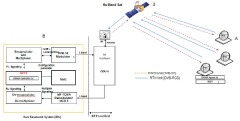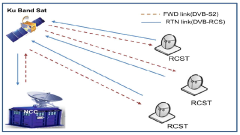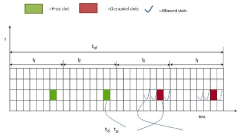Research on Dynamic Space Allocation and Reconfiguration - Eureka
OCT 8, 20244 MIN READ
Generate Your Research Report Instantly with AI Agent
Patsnap Eureka helps you evaluate technical feasibility & market potential.
Dynamic Space Allocation Goals and Background
The primary objective is to explore the potential of dynamic space allocation and reconfiguration technologies in addressing the challenges of efficient resource utilization and adaptability in various computing environments. This involves analyzing the current state of the art, identifying key technical hurdles, and proposing innovative solutions to enable flexible and on-demand allocation of computing resources based on dynamic workload requirements.
The research aims to develop novel algorithms and architectures that can dynamically partition and reconfigure available resources, such as processing units, memory, and storage, to optimize performance and energy efficiency. This would enable seamless scaling and load balancing, ensuring optimal resource utilization while minimizing waste and maximizing system responsiveness to changing demands.
The research aims to develop novel algorithms and architectures that can dynamically partition and reconfigure available resources, such as processing units, memory, and storage, to optimize performance and energy efficiency. This would enable seamless scaling and load balancing, ensuring optimal resource utilization while minimizing waste and maximizing system responsiveness to changing demands.
Market Demand for Space Reconfiguration Technologies
- Demand for Space Optimization
Efficient utilization of available space is crucial for various industries, driving the need for dynamic space allocation and reconfiguration technologies. - Flexible Manufacturing
Manufacturing facilities require adaptable production lines to accommodate changing product mixes and volumes, necessitating reconfigurable space solutions. - Smart Buildings and Infrastructure
Intelligent buildings and infrastructure can benefit from space reconfiguration technologies to optimize space usage and enhance functionality. - Logistics and Warehousing
Dynamic space allocation can streamline logistics operations, enabling efficient storage and retrieval of goods in warehouses and distribution centers. - Retail and Hospitality
Reconfigurable spaces allow retailers and hospitality businesses to adapt their layouts to changing customer preferences and seasonal demands.
Current State and Challenges in Space Allocation
- Spatial Constraints
Limited availability of physical space, especially in densely populated areas, poses significant challenges for efficient allocation and utilization. - Dynamic Demand Fluctuations
Space requirements can vary dynamically based on factors like population growth, economic activities, and changing user preferences, making it difficult to maintain optimal allocation. - Resource Optimization
Balancing the allocation of limited space resources across various sectors, such as residential, commercial, and public infrastructure, is a complex optimization problem. - Regulatory and Policy Challenges
Spatial allocation and reconfiguration are subject to various regulations, zoning laws, and urban planning policies, which can create bureaucratic hurdles and conflicting priorities. - Data Availability and Integration
Lack of comprehensive and up-to-date data on spatial usage, demographics, and infrastructure can hinder effective decision-making and resource allocation.
Key Players in Space Management Technologies
The competitive landscape for "Research on Dynamic Space Allocation and Reconfiguration" is characterized by a mix of companies and educational institutions at various stages of technological maturity. Key players include Digital Global Systems, Inc., ZTE Corp., Intel Corp., and Microsoft Technology Licensing LLC, which are advanced in technology development and market application. Educational institutions like Nanjing University of Aeronautics & Astronautics, Southeast University, and Harbin Institute of Technology contribute significantly to foundational research. The market is growing, driven by increasing demand for efficient space utilization in various sectors. The technology is maturing, with significant contributions from both industry and academia.
International Business Machines Corp.
Technical Solution: IBM's AI-powered system optimizes space utilization in real-time, predicting requirements and adjusting allocations dynamically based on usage patterns and environmental factors.
Strength: Advanced AI integration. Weakness: High implementation cost.
Vmware LLC
Technical Solution: VMware's virtualization technology enables flexible and efficient space management by dynamically reallocating resources based on virtual machine workloads and user demands.
Strength: High flexibility. Weakness: Complexity in setup and management.
Core Innovations in Space Reconfiguration
A system and method for dynamic allocation of communication resources for DVB-RCS compliant satellite terminals and implementation thereof
PatentActiveIN202111010107A
Innovation
- Designing a space-based information network resource dynamic allocation model and a dynamic resource allocation scheme.
- Dynamically allocating additional downlink resources on the satellite to compensate for signal degradation caused by factors like rain or increased communication traffic.
- Dynamically designating priority for resource requests and allocating resources to partially or completely fill the requests, allowing maximum resource utilization while protecting minimum access.
Regulatory and Compliance Considerations
Dynamic space allocation and reconfiguration is a critical technology for optimizing resource utilization in various domains, such as cloud computing, data centers, and software-defined networks. This technology aims to dynamically allocate and reconfigure available resources based on real-time demand, ensuring efficient resource utilization and minimizing waste. By leveraging advanced algorithms and techniques, dynamic space allocation and reconfiguration can adapt to changing workloads, user requirements, and system constraints, enabling flexible and scalable resource management. This technology holds significant potential for enhancing performance, reducing costs, and improving overall system efficiency across diverse applications and industries.
Environmental Impact of Space Reconfiguration
Dynamic space allocation and reconfiguration is a critical technology for optimizing resource utilization in various domains, such as cloud computing, data centers, and software-defined networks. This technology aims to dynamically allocate and reconfigure available resources based on real-time demands, ensuring efficient resource utilization and minimizing waste. By leveraging advanced algorithms and techniques, dynamic space allocation and reconfiguration can adapt to changing workloads, user demands, and system conditions, enabling flexible and scalable resource management. This technology holds significant potential for enhancing system performance, reducing operational costs, and improving overall efficiency across diverse industries and applications.
Unlock deeper insights with Patsnap Eureka Quick Research — get a full tech report to explore trends and direct your research. Try now!
Generate Your Research Report Instantly with AI Agent
Supercharge your innovation with Patsnap Eureka AI Agent Platform!



